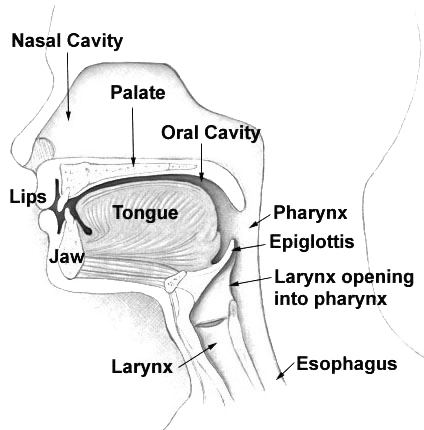Latin Palatum Dorlands/Elsevier Palate FMA 54549 | MeSH A14.521.658 TA A05.1.01.102 | |
 | ||
The palate /ˈpælᵻt/ is the roof of the mouth in humans and other mammals. It separates the oral cavity from the nasal cavity. A similar structure is found in crocodilians, but, in most other tetrapods, the oral and nasal cavities are not truly separate. The palate is divided into two parts, the anterior bony hard palate, and the posterior fleshy soft palate (or velum).
Contents
Innervation
The maxillary nerve branch of the trigeminal nerve supplies sensory innervation to the palate.
Development
The hard palate forms before birth.
Variation
If the fusion is incomplete, it is called a cleft palate.
Function
When functioning in conjunction with other parts of the mouth the palate produces certain sounds, particularly velar, palatal, palatalized, postalveolar, alveolo-palatal, and uvular consonants.
Etymology
The English synonyms palate and palatum, and also the related adjective palatine (as in palatine bone), are all from the Latin palatum via Old French palat, words that, like their English derivatives, refer to the "roof of the mouth."
The Latin word palatum and its derivatives mentioned above are all unrelated to a similar-sounding Latin word meaning palace, palatium, from which other senses of palatine and the English word palace itself derive.
As the roof of the mouth was once considered the seat of the sense of taste, palate can also refer to this sense itself, as in the phrase "a discriminating palate". By further extension, the flavor of a food (particularly beer or wine) may be called its palate, as when a wine is said to have an oaky palate.
